Themed collection Peptide and protein nanotechnology

Peptide and protein nanotechnology into the 2020s: beyond biology
Guest editors Rein Ulijn and Roman Jerala introduce the Peptide and protein nanotechnology themed issue of Chemical Society Reviews.

Chem. Soc. Rev., 2018,47, 3391-3394
https://doi.org/10.1039/C8CS90055H
Secondary structures in synthetic polypeptides from N-carboxyanhydrides: design, modulation, association, and material applications
This article highlights the conformation-specific properties and functions of synthetic polypeptides derived from N-carboxyanhydrides.

Chem. Soc. Rev., 2018,47, 7401-7425
https://doi.org/10.1039/C8CS00095F
Achieving biopolymer synergy in systems chemistry
Successful integration of chemical and physical networks through template assisted replication processes as well as mutualistic associations between polymers facilitates the translation of the macromolecular functions of biology into synthetic frameworks.
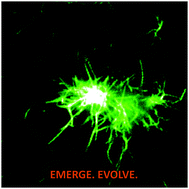
Chem. Soc. Rev., 2018,47, 5444-5456
https://doi.org/10.1039/C8CS00174J
Guiding principles for peptide nanotechnology through directed discovery
This review explores recent efforts in the experimental and computational mapping and searching of the peptide sequence space, or directed discovery, of functional peptide based nanoscale systems and materials.
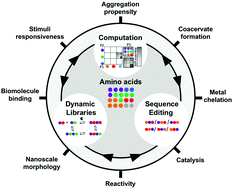
Chem. Soc. Rev., 2018,47, 3737-3758
https://doi.org/10.1039/C8CS00177D
Tailoring lumazine synthase assemblies for bionanotechnology
The cage-forming protein lumazine synthase is readily modified, evolved and assembled with other components.
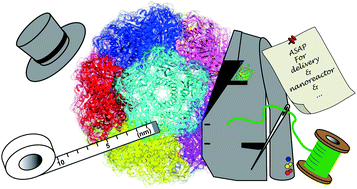
Chem. Soc. Rev., 2018,47, 3543-3557
https://doi.org/10.1039/C8CS00154E
Multicomponent self-assembly as a tool to harness new properties from peptides and proteins in material design
Nature is enriched with a wide variety of complex, synergistic and highly functional protein-based multicomponent assemblies.
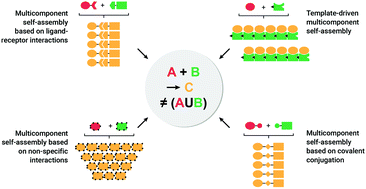
Chem. Soc. Rev., 2018,47, 3721-3736
https://doi.org/10.1039/C8CS00121A
Multicomponent peptide assemblies
This review presents recent efforts in the development of multicomponent supramolecular peptide assemblies with a focus on multicomponent assemblies derived from β-sheet peptides, low molecular weight peptides, peptide amphiphiles, coiled coil peptides, collagen, and related systems.
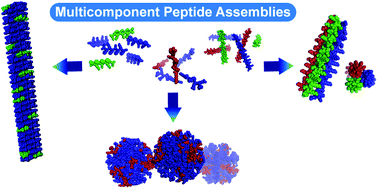
Chem. Soc. Rev., 2018,47, 3659-3720
https://doi.org/10.1039/C8CS00115D
Molecular simulations of self-assembling bio-inspired supramolecular systems and their connection to experiments
The self-assembly of bio-inspired supramolecular polymers can be unravelled using molecular dynamics simulations combined with experiments.
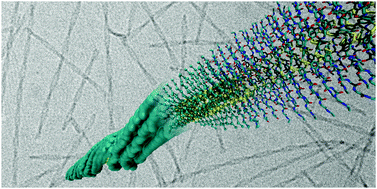
Chem. Soc. Rev., 2018,47, 3470-3489
https://doi.org/10.1039/C8CS00040A
Solid-state electrical applications of protein and peptide based nanomaterials
This review summarizes recent advancements in electrical properties and applications of natural proteins and mutated variants, synthetic oligopeptides and peptide–π conjugates.
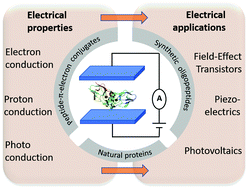
Chem. Soc. Rev., 2018,47, 3640-3658
https://doi.org/10.1039/C7CS00817A
Catalytic peptide assemblies
Peptides can self-assemble to form catalytic aggregates with activities comparable to those of natural enzymes.

Chem. Soc. Rev., 2018,47, 3621-3639
https://doi.org/10.1039/C8CS00080H
Peptide-based nanoprobes for molecular imaging and disease diagnostics
Peptide-based nanoprobes can improve the diagnosis, staging, treatment, management, and prognosis of numerous diseases by interfacing with and/or sensing of disease-relevant biomolecules.
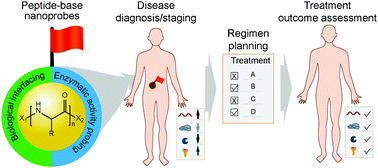
Chem. Soc. Rev., 2018,47, 3490-3529
https://doi.org/10.1039/C7CS00793K
Protein cage assembly across multiple length scales
Assembly of protein cages across multiple length scales is described, with an emphasis on their use as functional biomaterials.

Chem. Soc. Rev., 2018,47, 3433-3469
https://doi.org/10.1039/C7CS00818J
Peptide and protein nanoparticle conjugates: versatile platforms for biomedical applications
Peptide– and protein–nanoparticle conjugates have emerged as powerful tools for biomedical applications, enabling the treatment, diagnosis, and prevention of disease.
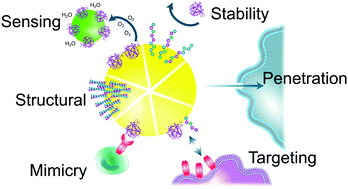
Chem. Soc. Rev., 2018,47, 3574-3620
https://doi.org/10.1039/C7CS00877E
The life of proteins under mechanical force
We review the role of mechanical force in the protein life cycle and give an outlook on mechanochemistry and mechanopharmacology.
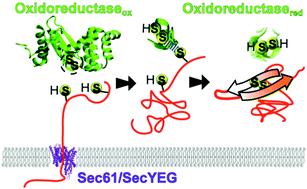
Chem. Soc. Rev., 2018,47, 3558-3573
https://doi.org/10.1039/C7CS00820A
Coiled coil protein origami: from modular design principles towards biotechnological applications
This review illustrates the current state in designing coiled-coil-based proteins with an emphasis on coiled coil protein origami structures and their potential.
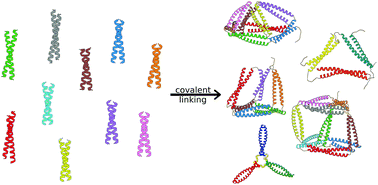
Chem. Soc. Rev., 2018,47, 3530-3542
https://doi.org/10.1039/C7CS00822H
Silkworm silk-based materials and devices generated using bio-nanotechnology
Silks are natural fibrous protein polymers that are spun by silkworms and spiders. This tutorial review summarizes and highlights recent advances in the use of silkworm silk-based materials in bio-nanotechnology.
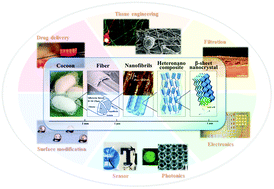
Chem. Soc. Rev., 2018,47, 6486-6504
https://doi.org/10.1039/C8CS00187A
Engineering enzyme microenvironments for enhanced biocatalysis
Protein engineering provides a means to alter protein structure leading to new functions.

Chem. Soc. Rev., 2018,47, 5177-5186
https://doi.org/10.1039/C8CS00085A
Protein delivery into cells using inorganic nanoparticle–protein supramolecular assemblies
Direct intracellular delivery of proteins using inorganic nanoparticle–protein supramolecular assemblies.
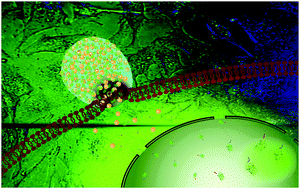
Chem. Soc. Rev., 2018,47, 3421-3432
https://doi.org/10.1039/C8CS00008E
Minimalistic peptide supramolecular co-assembly: expanding the conformational space for nanotechnology
This review highlights the recent advances and future perspective of minimalistic peptide supramolecular co-assembly for nanotechnology.
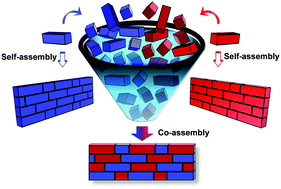
Chem. Soc. Rev., 2018,47, 3406-3420
https://doi.org/10.1039/C7CS00827A
How should multicomponent supramolecular gels be characterised?
We discuss the current state of characterising multicomponent low molecular weight gels across all length scales, and the effectiveness of the different techniques that have been used.
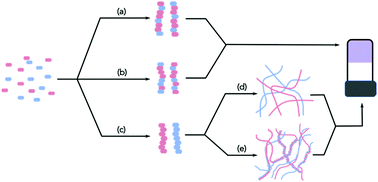
Chem. Soc. Rev., 2018,47, 3395-3405
https://doi.org/10.1039/C7CS00804J
About this collection
We are delighted to present our Chemical Society Reviews themed issue on peptide and protein nanotechnology, guest edited by Rein V. Ulijn (CUNY) and Roman Jerala (National Institute of Chemistry, Ljubljana). Proteins and peptides are versatile programmable polymers and hold the key to fundamental working principles of biology. In the past decade there has been an expansion in the area, including a shift from designed structures to designed function, and this issue provides an overview of the state of this interdisciplinary field.